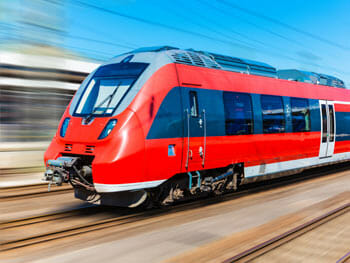
On May 12, 2015, Amtrak’s Northeast Corridor (NEC), the stretch of tracks that run from Washington, DC, to Boston, suffered one of its worst accidents ever. Amtrak Train 188 derailed and overturned in Philadelphia’s Port Richmond neighborhood, killing eight people and injuring over 200. More than 240 passengers were on the train at the time of the crash.
When a horrific event such as this one occurs, we must step back and consider possible causes, if only to prevent future accidents.
Amtrak by the Numbers
The NEC is the busiest stretch of train tracks in the U.S., carrying more than 11.4 million passengers during Amtrak’s fiscal year (FY) 2013. Amtrak operates more than 2,200 trains daily over some portion of the NEC. It has carried more than three times as many riders as the airlines have between Washington, DC and New York City alone. Washington, DC, is the second busiest station, and Baltimore is the eighth busiest, with millions of riders. Because of this traffic load, it should be no surprise that the NEC has the most derailments of any area in which Amtrak runs trains.
Three Deadly Accidents
It’s safe to say we have a lot of trains rolling through Maryland. And our area is no stranger to train accidents. In 1987, Amtrak Train 94’s accident at Gunpow Interlocking, 18 miles northeast of Baltimore, left 14 dead and hundreds injured. At the time, it was the deadliest Amtrak crash in history. In 1996, a collision between a MARC commuter train and Amtrak’s Capitol Limited Train 29 in Silver Spring, Maryland, left a total of 11 dead. In both of these crashes, human error and/or negligence was the cause.
The causes for the 2015 derailment in Port Richmond are still under investigation. Although the train was traveling over 100 mph in an area where the speed limit is 50 mph, at this point in the investigation, error or negligence on the engineer’s part does not seem to be involved.
One thing to consider is that Train 188’s accident might not have occurred if positive train control (PTC), a computerized speed-limiting system, had been operational, as it is in other sections of the NEC. It is not completely clear why PTC was not up and running at the crash site.
Determining Cause and Fault
Determining the cause of an Amtrak accident and who is legally at fault for injuries can be complex. Amtrak, also known as the National Railroad Passenger Corporation, is a government-owned corporation. Many factors come into play when it comes to pursuing lawsuits, especially against the government.
Other train accident causes can be human error, negligence on the part of employees (as in the two previous Maryland Amtrak accidents mentioned), track problems, or equipment failure, either because of a lack of maintenance, or because of a manufacturer’s defect.
It is important to note the legal definition of personal injury at this point. Personal injury in the legal sense is an injury caused by the negligence or carelessness of another person or a business. A person is negligent when he or she fails to exercise the degree of care considered reasonable under the circumstances, resulting in an unintended injury to another party.
Find Out If You Have a Case
The Law Offices of Steven H. Heisler have worked for more than two decades to help victims of personal injury. If you have been injured in an accident, you should not delay, because there is a statute of limitations – or a time limit – for filing personal injury claims. Call Steven H. Heisler of Baltimore, Maryland, today for a free initial consultation by calling (410) 625-4878, or use our online form.
